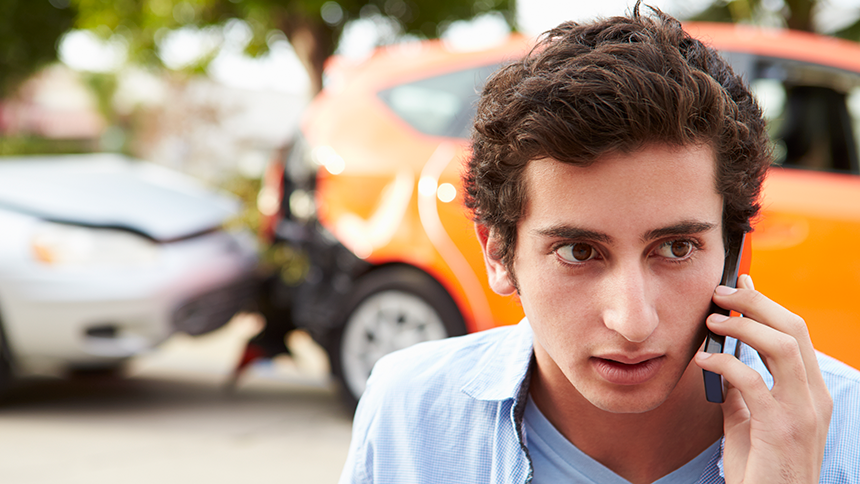Slower brain development ups a teen’s risk of getting into a car accident
Lack of driving experience isn't the only factor in whether a teen gets into a car crash

Age isn’t a teen’s only risk when it comes to driving. So is the rate at which the brain develops — something individuals can’t control.
monkeybusinessimages/iStock/Getty Images Plus
With driver’s licenses in hand, teens may think they’re road-ready, safe drivers. But tapping the brakes to consider how the adolescent brain develops might be a good idea. Young drivers whose brain function lags behind that of their peers are more likely to report having a car crash. That’s the finding of a new study.
Globally, car crashes and road injuries are leading causes of death among adolescents. In the United States, for instance, the youngest drivers have the highest rate of crashes and driving-related injuries. “It’s a big public health concern,” says Elizabeth Walshe. A cognitive neuroscientist, she studies how the brain works. Walshe works in Philadelphia at the University of Pennsylvania and at Children’s Hospital.
Driving experience — or lack of it — is important. Yet it’s not a teen driver’s only risk factor. Age, too, seems to be a predictor of who’s at risk of getting into a wreck. So Walshe’s team set out to learn what sets young drivers apart.
That team followed a group of kids for seven years, starting when they were between the ages of 11 and 13. Every few years, the researchers measured traits linked to having a car crash. At the end, they asked 84 of the participants about their driving experiences, including crashes. Roughly three in 10 reported at least one accident.
The researchers focused on the participants’ working memory. It stores temporary memories to help the brain process information in the moment, explains Walshe. Think of it like a computer’s random access memory, or RAM. To size up their working memory, the participants took a computer test that measured their reaction time.
The scientists found that accident risk was not linked to the working memory a participant had at the start of the study. Instead, it was tied to the pace at which a teen’s working memory developed.
Knowing the relationship between the brain’s RAM and crash risk could improve safety for young drivers. Walshe envisions teens taking a test in a doctor’s office. Comparing kids’ working-memory development to their peers’ might identify teens at higher risk for an accident. And it might point out who could use more help during driver training.
Walshe’s team shared its findings September 13 in JAMA Network Open.
Ways to aid working memory
Driving is a complex task. The brain helps drivers steer their vehicles. At the same time, drivers have to watch for pedestrians and other vehicles. Throughout, the brain is constantly updating information to help a driver plan the next move.
“There are just a lot of things that have to be tracked and responded to at the same time,” notes Monica Luciana. She’s a cognitive neuroscientist at the University of Minnesota in Minneapolis. With experience, these tasks become more automatic. It’s like learning to ride a bike, she says. “Initially, you probably had to think a lot about what you were doing.”
Cutting down on distractions is smart, Luciana says. This takes some burden off a new driver’s working memory. Other passengers, music and cell phones can all create more information for the brain to track. They make driving more difficult, especially for new drivers.
But working memory is a system that can change, Luciana says. And scientists are developing ways to help people boost their working memory. “We think we can influence somebody’s ability through training.”







